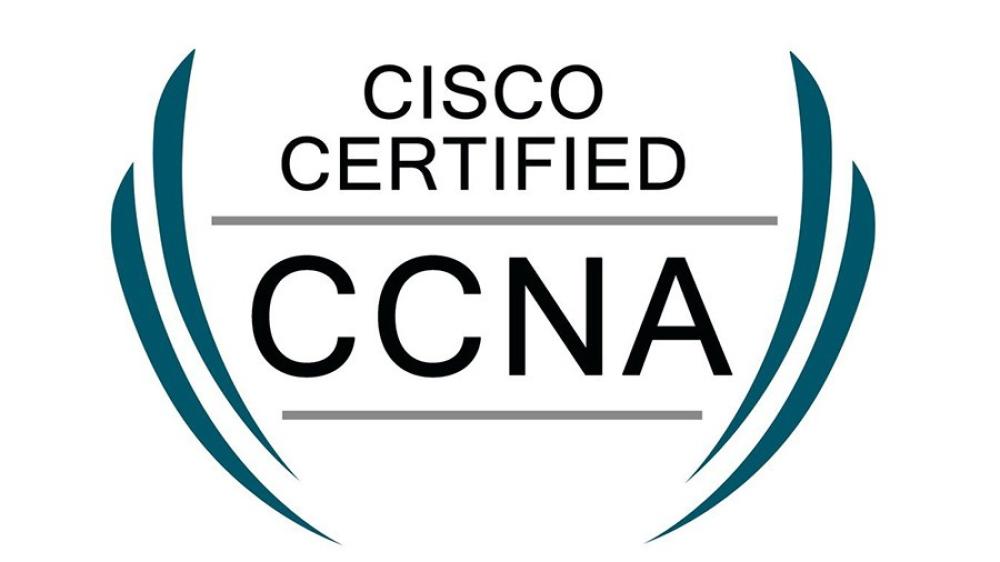مقدمة عن الدورة :
تعد الشهادة من أشهر شهادات تكنولوجيا المعلومات ونقطة الدخول إلى عالم Cisco . تتحدث الشهادة بإستمرار لتواكب تطور الشبكات و تغطي هذه الدورة المعرفة الأساسية وتركز على الحلول والتقنيات المطلوبة لبدء حياتك المهنية في مجال الشبكات
____________________________
فوائد الدورة :
بنهاية الدورة يكون المتدرب قادر على ..
- التطبيق العملي لأغلب مواضيع الدورة .
- معرفة أساسيات الشبكات والوايرلس . الفرق بين البروتوكولات مثل IPv4 و IPv6 و TCP و UDP .
- الفرق بين ال Router & Switch ، و كيفية إعدادها وصيانتها .
- فهم بروتوكول ال Spanning - tree Protocol .
- تنفيذ ال VLANs و Trunks ، و التوجيه بين شبكات VLAN .
- بروتوكول ال OSPF وكيفية إعداده كيفية حماية الشبكة بال ACLs & AAA .
- القدرة على استكشاف أخطاء الشبكات الشائعة وإصلاحها .
- بناء شبكة بتوافر عالي ( High Availability ) .
- شرح جودة الخدمة ( Quality of Service )
- المحاكاة الافتراضية ، وتأثير أتمتة الشبكة على إدارة الشبكة التقليدية .
مواضيع الدورة:
Chapter 1 Network Fundamentals
1.1 Explain the role and function of network components
1.2 Endpoints.
1.3 Servers.
1.4 Compare physical interface and cabling types.
1.5 Single-mode fiber, multimode fiber, copper.
1.6 Compare TCP to UDP.
1.7 Configure and verify IPv4 addressing and subnetting.
1.8 Describe the need for private IPv4 addressing.
Chapter 2 Network Access
2.1 Describe switching concepts.
2.2 Identify interface (collisions, errors, mismatch duplex,
and/or speed).
2.3 MAC learning and aging.
2.4 Frame switching.
2.5 Frame flooding.
2.6 MAC address table.
2.7 Layer 2 and Layer 3 switches.
2.8 Power Over Ethernet (POE).
2.9 Configure and verify VLANs (normal range) spanning
multiple switches.
2.10 Access ports (data and voice).
2.11 Default VLAN
2.12 Configure and verify Interswitch connectivity.
2.13Trunk ports.
2.14 802.1Q.
2.15 Native VLAN.
2.16 Configure and verify Layer 2 discovery protocols
(Cisco Discovery Protocol and LLDP).
2.17 Configure and verify (Layer 2/Layer 3)
EtherChannel (LACP).
2.18 Interpret basic operations of Rapid PVST+ Spanning
Tree Protocol.
2.19 Root port, root bridge (primary/secondary).
2.20 Port states (forwarding/blocking).
2.21 PortFast.
Chapter 3 IP Connectivity
3.1 Overview of Cisco Routers.
3.2 Overview of Routing and routing protocols.
3.3 Interpret the components of routing table.
3.4 Routing protocol code.
3.5 Prefix.
3.6 Network mask.
3.7 Next hop.
3.8 Administrative distance.
3.9 Metric.
3.10 Gateway of last resort.
3.11 Determine how a router makes a forwarding
decision by default.
3.12 Configure and verify IPv4 and IPv6 static routing
and Floating static.
3.13 Describe IPv6 address types.
3.14 Unicast (global, unique local, and link local).
3.15 Anycast, Multicast.
3.16 Modified EUI 64.
3.17 Configure and verify single area OSPFv2.
3.18 Neighbor adjacencies.
3.19 Point-to-point.
3.20 Broadcast (DR/BDR selection).
3.21 Router ID.
3.22 Describe the purpose, functions, and concepts of
first hop redundancy Protocols.
Chapter 4 IP Services
4.1 Configure and verify inside source NAT using static
and pools.
4.2 Configure and verify NTP operating in a client and
server mode.
4.3 Explain the role of DHCP and DNS within the
network.
4.4 Explain the function of SNMP in network operations.
4.5 Describe the use of syslog features including
facilities and levels.
4.6 Configure and verify DHCP client and relay.
4.7 Explain QoS, such as classification, marking,
queuing, congestion, policing, and shaping.
4.8 Configure network devices for remote access using
SSH.
4.9 Describe the capabilities and function of TFTP/FTP
in the network.
Chapter 5 Security Fundamentals
5.1 Define key security concepts (threats,
vulnerabilities, exploits).
5.2 Next-generation firewalls and IPS.
5.3 Configure and verify device access control using
local passwords.
5.4 Describe security password policies elements.
5.5 Describe IPsec remote access and site-to-site VPNs
and WAN.
5.6 Configure and verify access control lists.
5.7 Configure and verify Layer 2 security features (DHCP
snooping, dynamic ARP inspection, and port security).
5.8 Compare authentication, authorization, and
accounting concepts
Chapter 6 Describe wireless principles
6.1 Nonoverlapping Wi-Fi channels, SSID, RF, Encryption.
6.2 Describe Cisco Wireless Architectures.
6.3 Small office/home office (SOHO).
6.4 Describe physical infrastructure connections of
WLAN components (AP, WLC).
6.5 Describe AP and WLC management access
connections (Telnet, SSH, HTTP, HTTPS, console, and
TACACS+/RADIUS).
6.6 Describe wireless security protocols (WPA, WPA2,
and WPA3).
6.7 Configure and verify WLAN within the GUI using WPA2 PSK.
Chapter 7 Describe characteristics of network topology architectures
7.1 Two-tier, Three-tier and Spine-leaf.
7.2 Explain virtualization fundamentals.
7.3 On-premise and cloud
Chapter 8 Automation and Programmability
8.1 Explain how automation impacts network
management.
8.2 Compare traditional networks with controller-based
networking.
8.3 Describe controller-based, software defined
architecture (overlay, underlay, and fabric).
8.4 Separation of control plane and data plane.
8.5 Northbound and Southbound APIs.
8.6 Cisco Digital Network Architecture Center (DNA).
8.7 Describe characteristics of REST-based APIs

